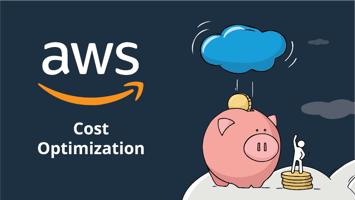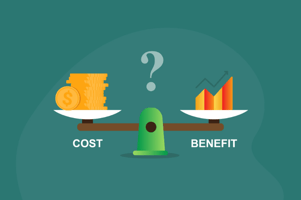Amazon Web Services (AWS) stands out as a pivotal platform for organizations seeking to leverage...
AWS Cost Management in 2024
AWS Cost Management in 2024 involves a strategic approach to controlling and optimizing expenses related to Amazon Web Services. With the growth and diversification of AWS services, it's essential for businesses to effectively manage their cloud expenditures to stay within budget while achieving business objectives. This involves a thorough understanding of AWS billing and account structures, real-time monitoring of usage and costs, and making informed decisions regarding resource allocation and deployment.
Central to effective AWS cost management is the capability to visualize and analyze cloud spending. AWS offers detailed billing reports and cost management tools that help users track usage patterns, identify trends, and pinpoint inefficiencies. Organizations often turn to third-party tools for deeper insights and recommendations for savings. By adopting a data-driven approach, businesses can adjust their cloud usage to minimize unnecessary costs, such as by terminating idle resources or opting for more cost-effective service options.
Cost optimization practices are critical in AWS cost management. These include selecting suitable pricing models like Reserved Instances or Savings Plans, optimizing resource utilization to match demand, and using cost allocation tags for detailed tracking. These strategies enable the precise allocation of cloud costs across different departments or projects, facilitating improved planning, budgeting, and accountability.

Cloud cost optimization is particularly crucial for DevOps teams, ensuring efficient resource use and cost-effectiveness in cloud environments. With the increasing complexity and dynamic nature of cloud infrastructure, DevOps teams must balance performance, scalability, and cost. Cost optimization strategies allow teams to eliminate wasteful spending, optimize resource distribution, and align cloud investments with business and operational goals.
Adopting serverless architectures, utilizing Spot Instances for flexible workloads, implementing FinOps principles, leveraging AI for cost optimization, and using sustainable computing practices are among the best practices for AWS cost management in 2024. Serverless architectures reduce costs by charging only for actual usage and automatically scaling to meet demand. Spot Instances offer significant discounts for flexible, interruptible workloads. FinOps principles provide a framework for managing and optimizing cloud costs through visibility, optimization, and governance. AI technologies offer insights into inefficiencies and predictive analytics for future usage and costs. Sustainable computing practices not only minimize environmental impact but can also lead to cost savings.
Towards the end of this analysis, it's crucial to highlight BlazingCDN, a content delivery network that enhances web performance and security while potentially reducing AWS-related costs. BlazingCDN works by distributing your content across a global network of servers, ensuring faster page loads, reduced bandwidth costs, and improved user experience. Its integration with AWS can complement your cost management strategy by optimizing data delivery and minimizing the load on origin servers, which can lead to further cost savings. BlazingCDN offers a simple, pay-as-you-go pricing model, making it an attractive option for businesses looking to improve their web performance without significant upfront investments. With features such as SSL support, DDoS protection, and real-time analytics, BlazingCDN is a robust solution for businesses aiming to enhance their online presence while keeping an eye on cost efficiency.

Adding to the comprehensive overview of AWS cost management and the introduction of BlazingCDN, it's important to delve deeper into the synergy between cloud cost optimization strategies and the utilization of content delivery networks (CDNs) like BlazingCDN to achieve more efficient and cost-effective cloud service deployments.
Advanced AWS Cost Management Strategies
Beyond the fundamental practices, advanced AWS cost management strategies involve a more nuanced approach to leveraging AWS services in conjunction with external tools and services like CDNs to enhance performance and reduce costs. These strategies include:
- Automated Cost Monitoring and Alerts: Utilizing AWS Lambda in conjunction with Amazon CloudWatch for creating custom cost and usage alerts. This automation can help in preemptively identifying potential cost overruns before they become significant issues.
- Resource Lifecycle Management: Implementing policies for the lifecycle management of resources, using AWS services such as AWS Auto Scaling and AWS Elastic Beanstalk, can optimize costs by automatically adjusting resources based on demand, and scheduling start and stop times for non-critical resources.
- Data Transfer Optimization: Minimizing data transfer costs by strategically placing resources within AWS regions and availability zones to reduce cross-region data transfer charges and employing Amazon CloudFront for caching content closer to the users to reduce outbound data transfers.
Leveraging BlazingCDN for Enhanced AWS Integration
BlazingCDN can play a pivotal role in enhancing AWS cost management by:
- Edge Caching: By caching content at the edge closer to the end-users, BlazingCDN reduces the number of requests that reach the origin server on AWS, thereby decreasing the load on AWS resources and potentially reducing the cost associated with data transfer and compute resources.
- Optimized Content Delivery: Through its global network of servers, BlazingCDN ensures that content is delivered from the nearest location to the user, improving load times and user experience. This efficiency can contribute to lower bounce rates and higher engagement, which indirectly supports the cost-effectiveness of online business operations.
- Security and DDoS Protection: BlazingCDN provides additional security layers, including DDoS protection and SSL/TLS encryption, which can help in safeguarding your AWS-hosted applications against cyber threats. This protection can reduce the potential costs associated with security breaches, including data loss, downtime, and reputation damage.
- Cost Transparency and Control: With BlazingCDN, businesses benefit from predictable pricing and the ability to monitor and control costs in real-time. This transparency and control are crucial for businesses to manage their overall cloud expenses effectively.
In the dynamic landscape of cloud computing and online content delivery, the integration of AWS with solutions like BlazingCDN represents a strategic approach to not only enhancing web performance and security but also optimizing cost management. By adopting advanced AWS cost management strategies and leveraging the capabilities of BlazingCDN, businesses can achieve a more balanced and cost-effective cloud service deployment. This holistic approach ensures that businesses can enjoy the scalability, flexibility, and performance of AWS while minimizing costs and maximizing the efficiency and reach of their online content through BlazingCDN. The synergy between AWS and BlazingCDN underscores the importance of a comprehensive and strategic approach to cloud cost management and online performance optimization in 2024 and beyond.


